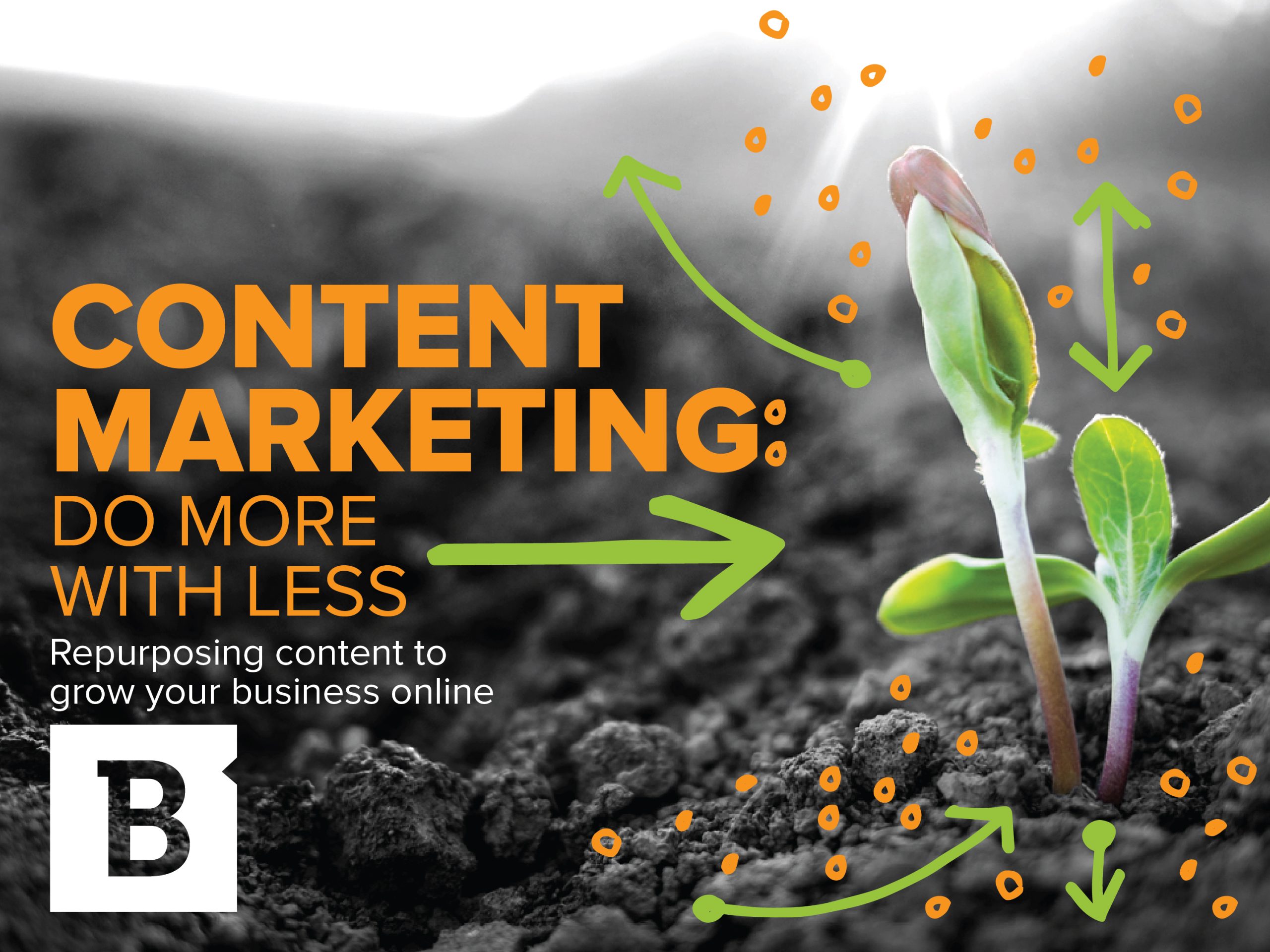Infographics, blogs, eBooks, whitepapers, case studies – the list of potential assets to create goes on and on. Developing a robust content marketing plan can be overwhelming when you think about everything you have to do all at once, and marketing managers are tasked with the job of determining which assets will provide the most ROI and which to avoid.
The last thing that any marketer wants to see after exerting tireless effort into their assets is for that content to go stale and stop providing value. With that being said, there are some fairly simple ways to repurpose/revamp older content into new marketing assets, saving you the time that it takes to create a new blog article from scratch.
If your blog has gone stale…
It might be time to add some mixed media to your strategy. We’ve found that adding custom images to blog content can increase the average blog reader’s session duration by 13 percent. These four steps will help you locate, refresh and re-share your best blog content:
- If you have a bevy of blog content on your site, you should start by assessing which articles have performed well with your target audience. When you’re investing your time, energy and money into creating custom graphics, you want to ensure that they’ll have a longer shelf life.
- Look for evergreen blog posts that have impressive analytics, especially a considerable amount of inbound links from other sites. Tools such as this free backlink checker can be used as a jumping-off point for this type of research.
- Additionally, you’ll need to find blogs that have a high amount of sessions with good engagement metrics and social shares. If some of the engagement numbers look somewhat lackluster, use this guide to assess what you could improve.
- Now that you’ve compiled a list of blog articles that are worth creating graphics for, this would be a great time to see if any of the copy itself could use some freshening up. Seeing as one of the top reasons to blog is to optimize your site for search engines, you’ll want to make sure that the data being presented to users is up to date with the latest trends. While a few years old, this guide from HubSpot on updating old posts, ironically, still has a lot of great tips to use.
- Finally, you should be well-versed with your top performing content and which pieces have some stand-out facts in them. Determine which facts you’d like to highlight in the different posts and get to work with your graphics design team to create visually appealing images to accompany these posts.
- Once that’s completed, it’s time to determine how you’re going to leverage your newly revamped posts. You can use them in newsletters and lead nurturing campaigns or share them across your social channels to boost the engagement and shareability of the posts.
If you’ve stockpiled infographics…
 It would be worth your while to consider incorporating data points that you’ve highlighted in these graphics into a larger asset. Infographics are terrific for a number of things, from simplifying complicated ideas to helping establish you as an industry thought leader.
It would be worth your while to consider incorporating data points that you’ve highlighted in these graphics into a larger asset. Infographics are terrific for a number of things, from simplifying complicated ideas to helping establish you as an industry thought leader.
One thing they’re not good for is capturing new leads, and they really should never be gated behind a form. These assets are meant to be highly shareable – the last thing that you want to do is inhibit your site visitors’ ability to easily share this information with their friends and colleagues. That doesn’t mean that you can’t reuse the research that went into producing these graphics, and even parts of the graphics themselves, for a larger asset that does live behind a download form.
Consider taking portions of the graphic that you’ve produced and incorporating them into a webinar for your company. Taking stand–out points of data from the graphic that align with the message of your webinar will save you legwork in creating a slide for your presentation as well as keep your audience engaged with the information that you’re presenting.
Webinars not your thing? You can still create an equally engaging slideshare presentation, which can do anything from help you rank better on Google to grow your email subscriber list. Use this handy guide from Kissmetrics to get started on your slideshare strategy if you don’t already have one in place.
If your whitepapers aren’t getting the attention they deserve…
It might be worth your while to go ahead with that dream of producing video assets for your company. The purpose of white papers is to provide unbiased data for readers and position you as a thought leader on the topic. Whitepapers take a lot of research when done properly, the kind that really shouldn’t go to waste.
If the whitepaper section of your website isn’t getting the downloads that it once did, it would be wise to take the research that you conducted and repurpose it into scripts for videos. We’ve seen that interactive content like videos has the ability to boost conversions for clients by supporting the prospect-to-customer journey.
Repurposing data from existing assets makes it all the easier to create a cohesive marketing campaign that pushes leads further down the sales funnel and into your waiting arms.




